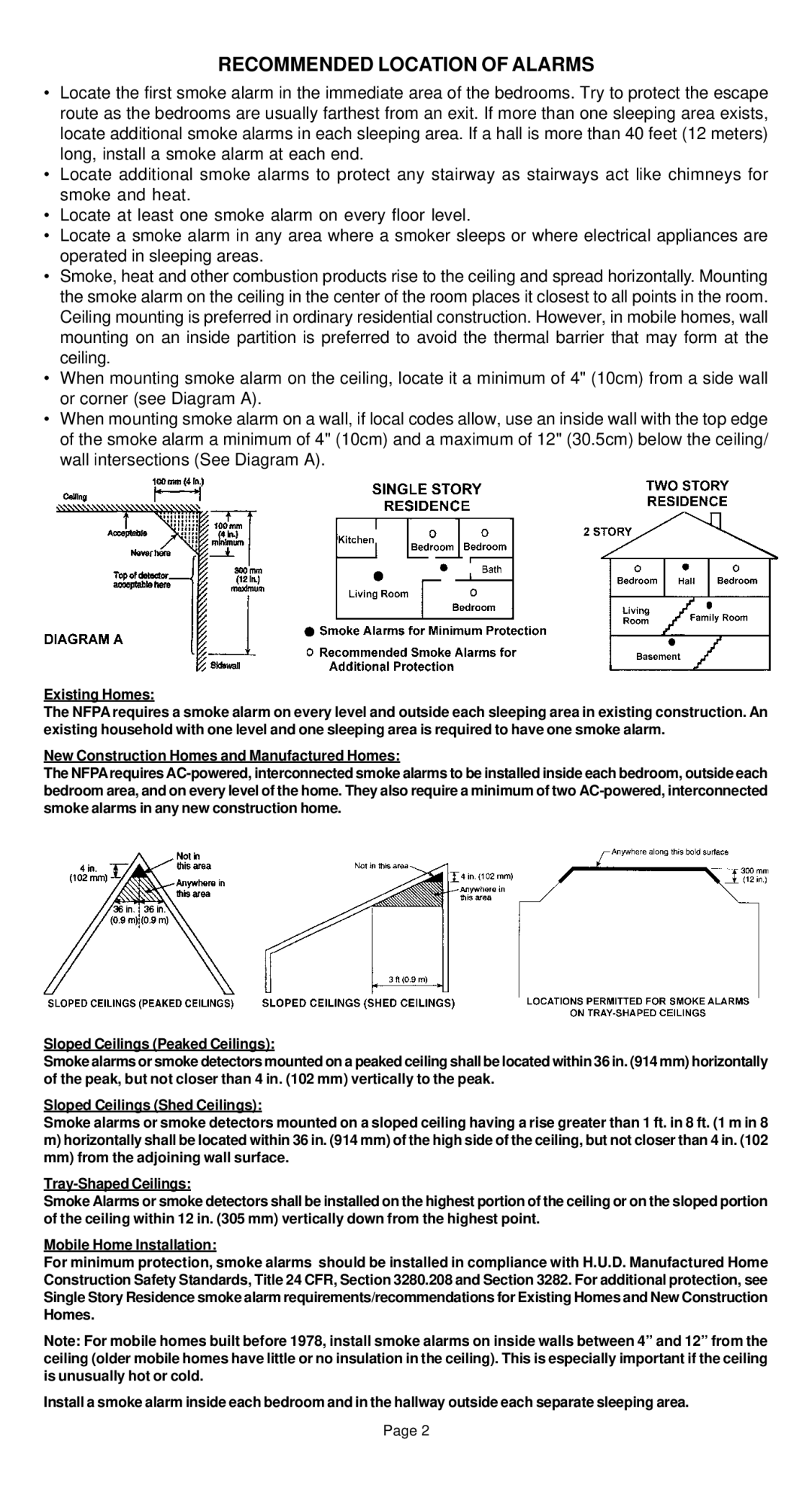SS-775-LR, SS-776-LR specifications
Universal Security Instruments has made a significant mark in the home safety industry with their innovative and reliable smoke and carbon monoxide detectors. Specifically, the Universal Security Instruments SS-776-LR and SS-775-LR models stand out for their advanced features and user-friendly designs.The SS-776-LR is a combination smoke and carbon monoxide detector that provides dual protection for your home. Its primary features include photoelectric smoke sensing technology, which is particularly effective in detecting slow smoldering fires, and an electrochemical carbon monoxide sensor for accurate CO detection. The unit’s dual ionization chamber design enhances smoke sensitivity, reducing the chances of false alarms while promoting quicker reaction times in case of real danger. Furthermore, the SS-776-LR is equipped with voice alerts that provide clear, intelligible warnings about the specific type of hazard present, whether it be smoke or carbon monoxide.
On the other hand, the SS-775-LR is a dedicated smoke detector that also utilizes photoelectric technology for effective smoke detection. It offers an advanced design, ensuring minimal nuisance alarms while maintaining high sensitivity to actual fire threats. The SS-775-LR features a sleek and modern appearance that allows it to blend seamlessly into any décor. One of its standout characteristics is the Smart Hush feature, which allows users to temporarily silence non-threatening alarms for up to 10 minutes, a valuable function during cooking or similar activities that may trigger false alarms.
Both models boast a long-lasting battery life, ensuring dependable performance over time without the hassle of frequent battery replacement. They also feature visual indicators that alert users when the battery is running low, promoting proactive maintenance. Another essential characteristic shared by these detectors is their easy-to-install design, making them suitable for both renters and homeowners alike.
In addition to their impressive functional specifications, both SS-776-LR and SS-775-LR adhere to the highest safety standards and are rigorously tested for performance and reliability. Their compact sizes allow for flexibility in placement, ensuring that safety can be achieved in various locations throughout your home.
In summary, the Universal Security Instruments SS-776-LR and SS-775-LR provide comprehensive safety solutions, combining cutting-edge technology with practicality. With their user-friendly features, elegant design, and efficient detection capabilities, they represent a wise investment for anyone looking to enhance their home’s security against fire and carbon monoxide hazards.

